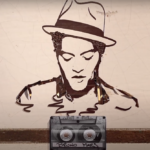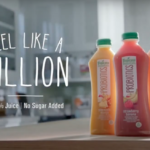




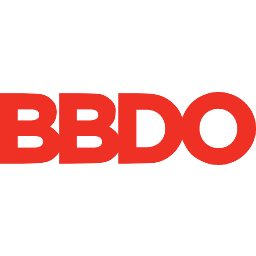





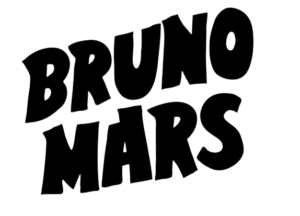
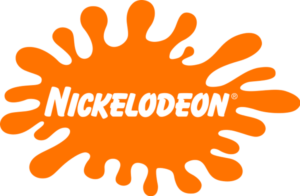




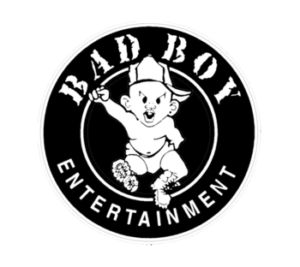








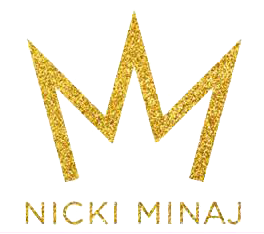

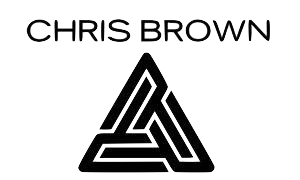
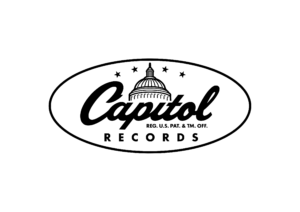



PRODUCER ROGER UBINA
I take immense pride in the diversity of my professional journey as a content producer. Over the years, I’ve had the opportunity to work on a wide array of content, from music videos to television shows, feature films, and high-profile commercial campaigns. What’s truly remarkable is that I find joy and fulfillment in each of these creative endeavors.
Producing music videos allows me to infuse melodies with captivating visuals, telling stories that resonate with audiences around the world. The fast-paced, dynamic nature of this medium keeps me on my toes, and the chance to collaborate with renowned artists and directors is a constant source of inspiration.
Television and feature films bring a different dimension to my work. Crafting narratives and characters, and seeing them come to life on screen, is a rewarding experience. It’s a realm where storytelling takes center stage, and I relish the challenges and triumphs that come with it.
Commercial campaigns present a unique canvas for creativity. Whether it’s promoting the Georgia Lottery or contributing to the Ad Color Awards, the world of commercials is a platform to convey messages in a visually compelling and persuasive way. I find it fulfilling to merge artistry with the need to capture the essence of a brand or message.
My journey in the Latin music arena, with over 20 number-one videos for artists like Marc Anthony and Ricky Martin, is a testament to my love for diversity in content. It’s a space where cultural richness and artistic expression merge, and I’m proud to be a part of it.
In all these varied content production landscapes, I have discovered that each has its unique challenges and rewards. What unifies them is my passion for storytelling and visual artistry. This diversity fuels my creativity, keeps me motivated, and ensures that no two days in my professional life are the same.
Shooting a music video in the bustling metropolis of New York City presents a whirlwind of challenges that can test even the most seasoned directors and producers. The city’s ceaseless energy offers a vibrant backdrop, but the logistical hurdles are immense. From securing permits in a maze of regulations to navigating the ever-changing weather, the unpredictability adds layers of complexity. Tight schedules collide with the city’s perpetual motion, causing unexpected delays.
Yet, enlisting the expertise of a local luminary like award-winning music video producer Roger Ubina, a native New Yorker, becomes an invaluable asset. Ubina’s intimate knowledge of the city’s intricacies, coupled with a network of connections, streamlines the process. His familiarity with hidden gems as filming locations and adeptness in maneuvering through the urban bustle not only eases logistical challenges but also infuses a unique authenticity into the visual narrative, elevating the music video to an unparalleled level.
Absolutely, here’s a revised version focusing more on production resources:
Effective storytelling hinges on harnessing appropriate production resources, from cutting-edge equipment to skilled talent, to bring narratives to life with precision and impact. These production resources, be it cameras, lighting setups, or sound recording devices, underpin the technical excellence necessary to translate artistic visions into captivating visuals that resonate with audiences. The synergy among a team of skilled professionals, vital production resources themselves, fosters innovation, collaboration, and a shared commitment to realizing the creative vision.
Moreover, the careful selection of locations, a crucial production resource, shapes the atmosphere and authenticity of a narrative, elevating the storytelling experience for audiences. Recognizing the pivotal role of these resources, Roger Ubina, a seasoned filmmaker, has initiated a resource tab on his website.
This curated repository offers insights, recommendations, and tools catering to production resources like equipment selection, talent acquisition, and location scouting. Ubina’s commitment to sharing knowledge stems from a desire to empower and support fellow creators in navigating the intricacies of the industry, ensuring access to the right production resources for their creative endeavors. Through Ubina’s initiative, the dissemination of valuable production resources aims to empower filmmakers, fostering a culture of collaboration and innovation that enriches storytelling practices and supports the growth of upcoming talents in the industry.
LIST OF A FEW OF MY FAVORITE VIDEOS.
1. Michael Jackson – “Thriller” (1982):
Directed by John Landis, this groundbreaking video transformed music videos into short films, featuring impressive choreography and special effects.
2. Queen – “Bohemian Rhapsody” (1975):
This early music video showcased the band’s creativity, blending animation and live action, and helped popularize the music video format.
3. Beyoncé – “Formation” (2016):
A powerful and politically charged video, directed by Melina Matsoukas, that became a cultural touchstone.
4. Madonna – “Like a Prayer” (1989):
Directed by Mary Lambert, this controversial video dealt with themes of race, religion, and sexuality.
5. A-ha – “Take On Me” (1985):
The video combines animation and live action in a unique and memorable way.
6. Peter Gabriel – “Sledgehammer” (1986):
A stop-motion animation and claymation marvel that was both groundbreaking and visually captivating.
7. Guns N’ Roses – “November Rain” (1992):
A mini-movie directed by Andy Morahan with an epic wedding scene and guitar solo in the desert.
8. Daft Punk – “Around the World” (1997):
Director Michel Gondry created a visually hypnotic and repetitive masterpiece.
9. OK Go – “Here It Goes Again” (2006):
Known for their creative videos, this treadmill dancing video directed by the band themselves went viral.
10. Beastie Boys – “Sabotage” (1994):
A parody of ’70s cop shows directed by Spike Jonze, featuring the Beastie Boys in hilarious roles.
11. Johnny Cash – “Hurt” (2003):
Mark Romanek’s video features powerful imagery, poignantly capturing the essence of the song.
12. Björk – “All Is Full of Love” (1999):
A striking blend of futuristic aesthetics and emotion, directed by Chris Cunningham.
13. R.E.M. – “Losing My Religion” (1991):
Directed by Tarsem Singh, this video features striking imagery and a captivating narrative.
14. Radiohead – “Karma Police” (1997):
Directed by Jonathan Glazer, it’s a surreal, haunting, and visually captivating video.
15. The Prodigy – “Smack My Bitch Up” (1997):
A controversial and intense video directed by Jonas Åkerlund.
These videos have left an indelible mark on the music video industry and continue to influence artists and filmmakers to this day.
A LIST OF MY FAVORITE DIRECTORS
Certainly, here is a list of 10 top music video directors and a couple of notable music videos they’ve directed:
1. David Fincher:
“Vogue” by Madonna
“Love is Strong” by The Rolling Stones
2. Spike Jonze:
“Weapon of Choice” by Fatboy Slim
“Sabotage” by Beastie Boys
3. Michel Gondry:
“Around the World” by Daft Punk
“Fell in Love with a Girl” by The White Stripes
4. Hype Williams:
“Formation” by Beyoncé
“California Love” by 2Pac
5. Joseph Kahn:
“Blank Space” by Taylor Swift
“Love the Way You Lie” by Eminem ft. Rihanna
6. Anton Corbijn:
“Enjoy the Silence” by Depeche Mode
“Viva la Vida” by Coldplay
7. Mark Romanek:
“Scream” by Michael Jackson & Janet Jackson
“Hurt” by Johnny Cash
8. Sophie Muller:
“No Scrubs” by TLC
“Why” by Annie Lennox
9. Hiro Murai:
“This Is America” by Childish Gambino
“Never Catch Me” by Flying Lotus ft. Kendrick Lamar
10. Dave Meyers:
“Without Me” by Eminem
“Havana” by Camila Cabello ft. Young Thug
These directors have made significant contributions to the world of music videos, creating visually stunning and iconic works that have enhanced the artistic impact of the songs they accompany.
A media producer stands as a linchpin within the realm of content creation, orchestrating the complex symphony that brings various forms of media to life. At the core of their multifaceted role lies the responsibility of overseeing and guiding a project from conception to completion, navigating the intricate landscape of storytelling, visual representation, and audience engagement.
The producer’s journey begins at the project’s inception, where they conceptualize the creative vision, assess feasibility, and often collaborate with writers, directors, and stakeholders to shape the narrative direction. This initial phase involves budgeting, resource allocation, and meticulous planning to ensure a seamless execution. Their purview encompasses a diverse array of media, spanning film, television, digital content, advertising, or even live events, demanding adaptability and an astute understanding of each medium’s nuances.
Throughout the production process, the producer serves as a linchpin, coordinating various departments, from casting and location scouting to overseeing technical aspects like cinematography, sound design, and visual effects. Their role extends beyond mere logistics, encompassing creative decision-making and problem-solving, ensuring the project aligns with the intended vision while navigating unforeseen challenges. They act as a bridge between creative vision and practical implementation, juggling multiple responsibilities to maintain cohesion and momentum.
Furthermore, the producer shoulders the weight of financial stewardship, managing budgets, negotiating contracts, and seeking funding or sponsorships to support the project’s needs. Their expertise in navigating financial constraints while maximizing creative potential is instrumental in ensuring the project’s success.
As the project nears completion, the producer takes charge of post-production, overseeing editing, sound mixing, and the final touches that polish the content to its finest form. Simultaneously, they navigate marketing strategies, collaborating with distribution channels to ensure the content reaches its intended audience effectively. This phase involves strategic planning, promotional campaigns, and leveraging various platforms to optimize visibility and impact.
Ultimately, a media producer’s responsibility transcends the technical and logistical aspects of production. They are custodians of a project’s soul, stewards of its narrative integrity, and architects of its success. Their multifaceted role demands a fusion of creative insight, leadership, business acumen, and unwavering dedication to realize the vision, craft compelling stories, and captivate audiences across diverse mediums. The producer’s legacy lies not just in the content they create, but in the indelible mark they leave on the ever-evolving landscape of media and storytelling.
music video elastic people produtions,music video alliance media group,season covid compliance officer lead,livespecial event den of thieves,video alliance media group music
WHAT DOES A PRODUCER DO?
A producer plays a vital role on the set of a music video production. Their responsibilities on set include:
1. Overseeing Production: The producer is ultimately responsible for the smooth execution of the production. They ensure that all elements are in place, including the crew, equipment, and talent. They work to keep the production on schedule and within budget.
2. Problem-Solving: On set, unexpected issues can arise, such as weather-related delays, equipment malfunctions, or scheduling conflicts. Producers are skilled problem-solvers who work to find solutions quickly to keep the production on track.
3. Coordination: Producers coordinate the efforts of various departments and crew members, ensuring that everyone is working in sync. They facilitate communication between the director, the director of photography, the art department, the makeup and wardrobe teams, and other relevant departments.
4. Talent Management: Producers may be involved in managing talent on set, including actors, dancers, and extras. They ensure that talent is prepared and available when needed, and they may address any concerns or questions from the talent.
5. Scheduling: Producers keep a close eye on the schedule, making sure that scenes are shot in the right order and within the allocated time frames. They ensure that everything stays on schedule, as delays can result in increased costs.
6. Quality Control: Producers are responsible for maintaining the quality and consistency of the production. They work with the director and director of photography to ensure that the shots meet the artistic and technical standards set for the video.
7. Safety: On set, safety is a top priority. Producers are responsible for making sure that all safety protocols are followed to protect the cast and crew. This includes ensuring that the set is free from hazards and that all necessary safety equipment is in place.
8. Cost Management: Producers monitor the budget on set, making sure that costs are kept in check. They need to balance the desire for creativity with financial constraints.
9. Communication: Producers are often the main point of contact between the creative team and the artist or their representatives. They ensure that the artist’s input and concerns are addressed and that everyone is on the same page regarding the creative direction.
10. Decision-Making: Producers often make critical decisions on set. Whether it’s a change in the shooting schedule, the need for additional resources, or resolving creative differences, they play a central role in making choices that impact the production.
In summary, a music video producer on the set is like the conductor of an orchestra, coordinating the efforts of various departments and ensuring that the production proceeds as smoothly as possible. Their ability to manage the many moving parts and address challenges as they arise is essential to the successful creation of a music video.
CHANGES IN PRODUCTION
Branded content and commercials have undergone a magnificent evolution since their inception. As a producer immersed in this vibrant landscape for many years, witnessing its transformative journey has been nothing short of exhilarating.
Let’s rewind to the advent of television advertising, marked by the watershed moment of the first TV commercial on July 1, 1941. Bulova, a watch company, secured a historic 10-second slot during a Brooklyn Dodgers baseball game, setting the stage for an era of captivating visual storytelling. This milestone heralded a new era, showcasing the power of television as an advertising medium.
The landscape burgeoned further in the ’50s and ’60s, dubbed the “Golden Age” of advertising. Brands like Coca-Cola with their timeless jingles and Marlboro with iconic campaigns revolutionized how products were positioned. These decades witnessed the birth of memorable characters like the Marlboro Man, crystallizing the significance of emotional connections in advertising.
Fast-forward to the digital age, where the internet became a game-changer. The rise of social media platforms and streaming services in the late ’90s and early 2000s reshaped the advertising paradigm. Brands had to adapt, embracing shorter formats to captivate increasingly fragmented attention spans. This shift catalyzed the birth of viral marketing and influencer collaborations, where authenticity and relatability became paramount.
The concept of branded content itself has metamorphosed. It’s no longer merely about pushing a product; it’s about crafting compelling narratives that resonate with audiences. Storytelling has become the cornerstone, blurring the lines between entertainment and advertising. Brands now aim to evoke emotions, entertain, and engage on a deeper level.
Moreover, the democratization of content creation has been pivotal. User-generated content and interactive experiences have empowered consumers, turning them into co-creators and amplifiers of brand messages. This dynamic interaction between brands and their audiences has fueled a new era of authenticity and transparency.
As a producer, navigating these changes has been invigorating. The constant innovation and evolution keep the industry alive and thriving. Embracing new technologies, from augmented reality to immersive experiences, has opened up endless creative possibilities.
In conclusion, the journey of branded content and commercials is an odyssey of innovation, creativity, and adaptation. From the humble beginnings of a 10-second TV spot to the dynamic, multi-platform storytelling of today, the evolution has been awe-inspiring. As a producer entrenched in this ever-evolving landscape, I revel in the excitement of crafting compelling narratives that transcend mere advertisement, enriching the audience experience and leaving an indelible mark on the world of branded content.
